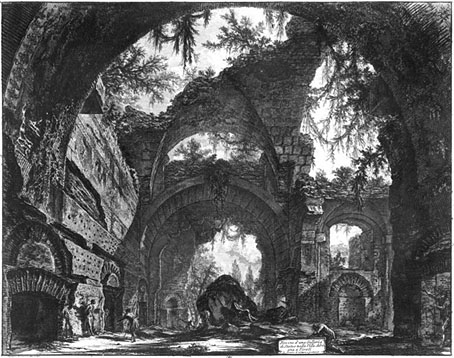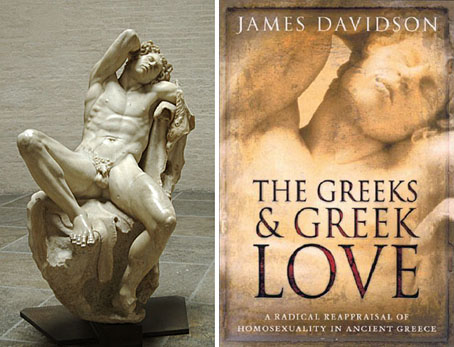Hadrian: Empire and Conflict is an exhibition based around the life of the Roman emperor which opens at the British Museum on 24 July and runs until 26 October, 2008.
This special exhibition will explore the life, love and legacy of Rome’s most enigmatic emperor, Hadrian (reigned AD 117–138).
Ruling an empire that comprised much of Europe, northern Africa and the Middle East, Hadrian was a capable and, at times, ruthless military leader. He realigned borders and quashed revolt, stabilising a territory critically overstretched by his predecessor, Trajan.
Hadrian had a great passion for architecture and Greek culture. His extensive building programme included the Pantheon in Rome, his villa in Tivoli and the city of Antinopolis, which he founded and named after his male lover Antinous.
This unprecedented exhibition will provide fresh insight into the sharp contradictions of Hadrian’s character and challenges faced during his reign.
Objects from 31 museums worldwide and finds from recent excavations will be shown together for the first time to reassess his legacy, which remains strikingly relevant today.
The Henry Moore Institute had an exhibition devoted to Hadrian’s lover Antinous last year. This week The Independent was looking at their relationship in light of the exhibition announcement, probably the most celebrated gay relationship in the ancient world.
Several of the artefacts (in the exhibition) relate to his male consort, Antinous, who accompanied him on his travels around the empire. These items include a poem written on papyrus, featuring the two men hunting together, and new finds that include memorials to the dead lover at Hadrian’s villa in Tivoli.
Although it was not uncommon for his predecessors to have taken gay lovers alongside a female spouse, Hadrian was unique in making his love “official” in a way that no other emperor had before him.

Ruined Gallery of the Villa Adriana at Tivoli.
I managed to see Hadrian’s villa at Tivoli when I visited Rome, a very well-preserved estate. One of my favourite places in the city, partly as a result of Piranesi’s drawings of the place, was the Castel Sant’Angelo which was built on the site of Hadrian’s Mausoleum. Piranesi also produced some renderings of the villa, including this splendid view of the ruined statue gallery.
And while we’re on the subject of antique sexuality, the provocative Greek sculpture known as the Barberini Faun appears in cropped form on the cover of a new book about homophilia in Ancient Greece, The Greeks and Greek Love by James Davidson. Davidson’s book looks like a fascinating work if this Guardian article on the subject is anything to go by, and a welcome tonic in the light of Frank Miller’s recent fabulations in 300.
Elsewhere on { feuilleton }
• The gay artists archive
• The etching and engraving archive
Previously on { feuilleton }
• The Cult of Antinous



Have you read “les Mémoires d’Hadrien” by Marguerite Yourcenar?
Interesting take on Hadrien’s life too.
There is are nice statues (or bits thereof) of Antinoos around Rome (and everywhere else) too. And plenty of fine young men statues as well (my camera is quite hapily snapping at them), even on something as preposterous as the Vittoriano monument…
No, I haven’t read Yourcenar’s book but I suppose I should, I see copies around often enough. I’m surprised Gore Vidal didn’t write anything about Hadrian since he likes that period. Maybe the politics weren’t interesting enough.
I found a site yesterday filled with pictures of Antinous statues, they’re all over Europe as well. They all look similar, if a bit vague. Makes me wonder how accurate a likeness they were.
I can echo the recommendation of Yourcenar (if you’ve not read it in the intervening 2 1/2 years!). While about as good as one can expect for the time it was written, there are some things no longer necessarily tenable about it; but still, a wonderful piece of literature by an amazing (lesbian) author.
I’ve written about and studied quite a bit of the ancient cultus of Antinous, and if you’re interested, there’s a lot on my blog about him–it’s dedicated to him, so there ought to be! ;)
You know what I’ve often wondered: why Antinous hasn’t come up in Alan Moore’s work, as far as I know, at any point thus far. He wasn’t mentioned in AARGH! (or in The Mirror of Love), nor in Promethea or anywhere else I’ve yet seen. (Neil Gaiman did mention him in American Gods briefly, but not in his piece in AARGH! either, which would have been somewhat appropriate.) Given that Lukian of Samosata–the only person whose work survives that details the cult of Glykon–was also a critic of Antinous’ cult, and of Pancrates (a priest/magician/poet associated with it), and both the Glykon cult and Antinous’ cult started around the same time (certainly within a decade or so of one another) and both emerged in Asia Minor and were popular there, I thought it would at least have garnered a footnote from him somewhere. Hmm. Maybe in the Bumper Book? Who knows?
Incidentally, I recently got a hold of your Haunter in the Dark and The Starry Wisdom–fantastic and beautiful work! Well done! I look forward to seeing much more from you in the future!
Hello, and no, I still haven’t read the Yourcenar. As it happens I found some favourable remarks from Gore Vidal recently concerning one of Mary Renault’s Alexander books; that’s more for the reading list.
As to Alan and Hadrian, I can’t say why he’s never mentioned the Emperor and Antinous, he certainly knows enough about the period. They’re not liable to be featured in the magic book unless there was something especially magical about the Cult of Antinous. As to The Mirror of Love, I’d guess the omission there was down to lack of space since he was running through several thousand years of history in a couple of pages.
Thanks for the comments about Haunter. I have two-and-a-half books waiting to see the light of day at the moment; one is the collected Reverbstorm which Savoy will be doing when they find the time (and money), the other two are the fiction I’ve been working on for almost a decade now, part of a big project of my own. So far publishers keep baulking at the sex content so I’m having to be patient.
I´m a brazilian psiquiatrist and I´ve recently read the Yourcenar´s book – and it is marvellous. It was the first time I heard something about Antinoo, and I´m glad to discover this and other sites about Adrian and his lover. Thank you very much.
James Davidson’s book contributes to what I suppose could be called a debate, since K.Dover! I wonder whether Dover should be down for making history in some way. James’ bibliography gives quite a few other links, but in no time we are in the classics and not gay art. There is a separation? I call this deception theory.